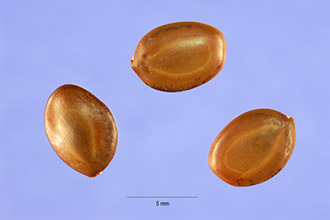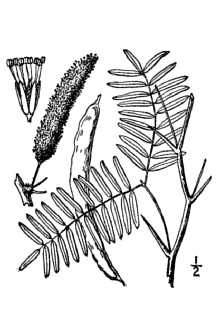Honey Mesquite
Scientific Name: Prosopis glandulosa Torr.

| General Information | |
|---|---|
| Usda Symbol | PRGL2 |
| Group | Dicot |
| Life Cycle | Perennial |
| Growth Habits | ShrubTree, |
| Native Locations | PRGL2 |
Plant Guide
Alternate Names
mesquite, glandular mesquite, algaroba
Uses
Ethnobotanic: The Apache and Isleta applied the juice from the leaves of honey mesquite to eyelids as a treatment for irritation. The Comanche chewed the leaves and swallowed the juice for an antacid. The Acoma ground the beans into flour and prepared the flour as a mush. They would also cook and eat the beans whole. The Navajo used the wood from honey mesquite to construct bows.
Status
Please consult the PLANTS Web site and your State Department of Natural Resources for this plant’s current status (e, Use soil moisture sensors to measure the soil moisture of Honey Mesquite.,g, threatened or endangered species, state noxious status, and wetland indicator values),
Weediness
This plant may become weedy or invasive in some regions or habitats and may displace desirable vegetation if not properly managed. Please consult with your local NRCS Field Office, Cooperative Extension Service office, or state natural resource or agriculture department regarding its status and use. Weed information is also available from the PLANTS Web site at plants.usda.gov.
Description
General: Legume Family (Leguminosae). Honey mesquite can be a shrub or tree ranging from 4 to 6 m tall. One or two stout spines are found at the nodes. The leaves are alternate, bipinnate, and have petioles. There are usually one paired division (pinnae) per leaf and 6 to 15 leaflets per pinna. The leaflets are 15 to 62 mm long and smooth. The flowers are in axillary spikes that are 7 to 9 cm long. The flowers are yellow in color. The calyx has a shallow, cup-like shape. Each flower has 10 stamens and white woolly ovaries. The legumes are straight and nearly as thick as they are broad (7-20 cm long). The legumes are reddish-brown in color and constricted between seeds. The seeds are 6 to 6.5 mm long and brownish in color. from
Native Trees of Texas
Distribution: For current distribution, please consult the Plant Profile page for this species on the PLANTS Web site. Habitat: Honey mesquite is found on plains and dry ranges.
Adaptation
Honey mesquite is tolerant of high intensity fires. Following top-kill by fire, sprouts arise from underground buds that are dormant on an underground stem.
Establishment
Honey mesquite pods should be harvested when the seeds rattle inside the pod and stored in a dry place. Prior to planting the seed coats should be scarified by chipping, cutting, or exposing to boiling water. Seeds germinate best between temperatures of 20 to 40 °C. Germination usually occurs within six hours of seed wetting. Scarified or sprouted seeds should be planted in well-drained soils. The best growth occurs where roots can reach ground water. Honey mesquite prefers full sun.
Pests and Potential Problems
Honey mesquite may suffer from stem fungal diseases in southern Texas. However, generally when grown in its native habitat and using local seed stock, honey mesquite should not be prone to debilitating pests. Cultivars, Improved, and Selected Materials (and area of origin) These materials are readily available from commercial plant sources. Contact your local Natural Resources Conservation Service (formerly Soil Conservation Service) office for more information. Look in the phone book under ”United States Government.” The Natural Resources Conservation Service will be listed under the subheading “Department of Agriculture.”
Control
Please contact your local agricultural extension specialist or county weed specialist to learn what works best in your area and how to use it safely. Always read label and safety instructions for each control method. Trade names and control measures appear in this document only to provide specific information. USDA, NRCS does not guarantee or warranty the products and control methods named, and other products may be equally effective.

